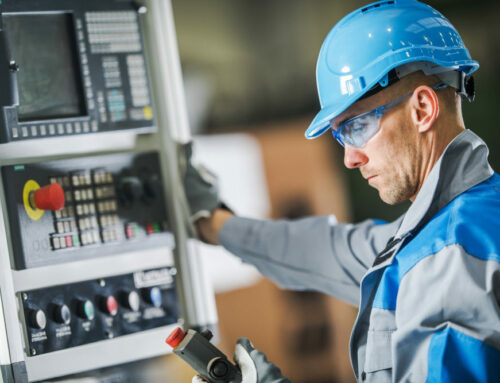Did you know that there are 21 welding accidents for every 100,000 workers in the United States? According to the Bureau of Labor Statistics, for every 100 million work hours, around 1,000 workers suffer a welding-related injury. That’s 100 times worse than the average injury rate for all other workers! This is where welding gloves are vital. In the majority of these cases, these accidents could have been completely prevented with the use of proper welding gloves. In today’s blog, we will be going over everything you need to know about welding gloves and why they’re so important.
Welding Gloves Must Be Up for the Task
Welding gloves are available in a number of materials, designs, and styles. Per the legislation, the glove you use must be tested and certified to ensure that you’ll be protected from hazards such as:
- Heat
- Electrical energy
- Shocks
- Cuts
- Impact
- Abrasion
- Puncture
- Ultraviolet radiation
- And more!
Welding is a hazardous job, and your welding gloves must protect not only your hands but your wrists as well. If a welder uses a machine over a 50% duty cycle and beads are over 5ft, manufacturers recommend adding heat-resistant material to the forearms, which can be worn either under or over a welding jacket.
Assess the Heat
The welding gloves you need will be partly based on the heat involved. Manufacturers and distributors will make the selection process simple, but sometimes you need to give them specifics about the work you’re involved with. For example, when stick welding, you will want to consider the following:
- Welding over 90 amps -> the glove should have Kevlar thread. This material is one of the strongest and most heat resistant materials as it decomposes at 800°F.
- Welding over 125 amps -> The glove should have cotton insulation.
- Welding over 250 amps -> the glove should have cotton and foam insulation.
- Welding over 500 amps -> The glove should have reflective material on the back of the hand.
Make Sure You Select the Correct Size
We cannot stress enough the importance of selecting a pair of welding gloves of a perfect fit. When welding gloves are too big, bulky, and stiff, getting a good welding bead will be a matter of luck, not skill. Be aware that welding with an incorrect welding glove size will only introduce hazards. When you get a new pair, be sure to try them on before using them. Flex your fingers, hand, and wrists to see how they feel and how they move. The best gloves will give you a greater range of motion.

Get the Right Welding Features
Welding gloves are multifunctional personal protective equipment (PPE) because welding is multifunctional work. Welding involves many other tasks besides actual welding time. To meet the demands of these tasks, welding gloves have to have a non-slip grip and a reinforced flexible palm so that the user can use the hammer and grinder safely. These gloves are also used for tough heavy work AND fine finger work. Quality gloves will allow you to do both types of work without having to remove them.
Get Your Welding Gloves at Extreme Safety
It takes time and effort to select the tight welding gloves for your specific job. Fortunately, Extreme Safety makes it easy to select the perfect type with our large selection of welding gloves and accessories. We hope this list of everything you need to know about welding gloves helps. At Extreme Safety, we have safety equipment that protects you from all kinds of hazards. Check out our wide selection of safety gear and equipment by clicking here. As experts in the safety industry, our team at Extreme Safety is always here and happy to help! You can call us at (310) 856-0166 or contact us by clicking here.


















